Abstract
In October 1985, six cases of legionnaires' disease were associated with a police headquarters building. Four were amongst staff who worked in or visited the communications wing of the headquarters and two cases occurred in the local community. A case-control study implicated the operations room of the communications wing as the main area associated with infection. This wing was air-conditioned and smoke tracer studies showed that drift from the exhaust as well as from the base of the cooling tower entered the main air-intake which serviced the air-conditioning system. Legionella pneumophila serogroup 1 subgroup pontiac was isolated from water and sludge in the cooling tower pond. Contaminated drift from the top of the cooling tower was probably responsible for the two community cases. An additional discovery was that symptoms suggestive of the sick-building syndrome were associated with working in this wing.
Full text
PDF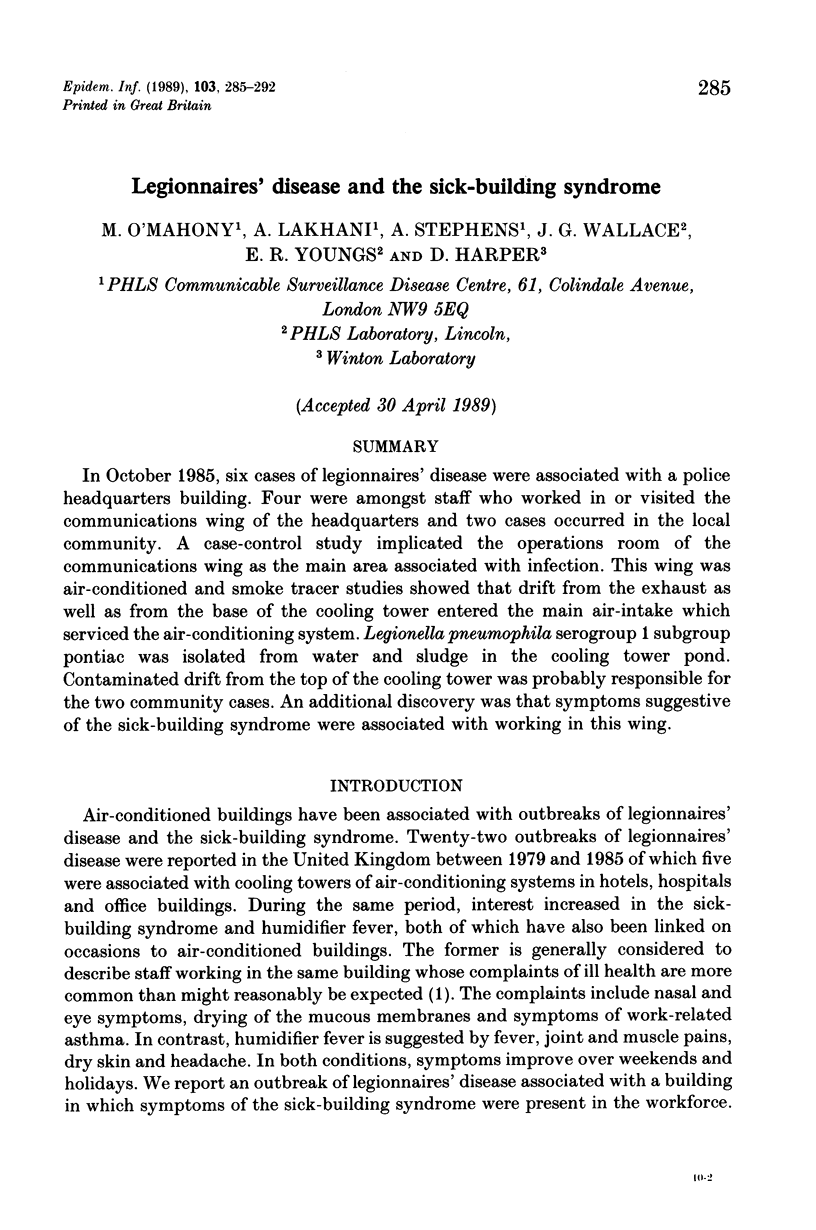
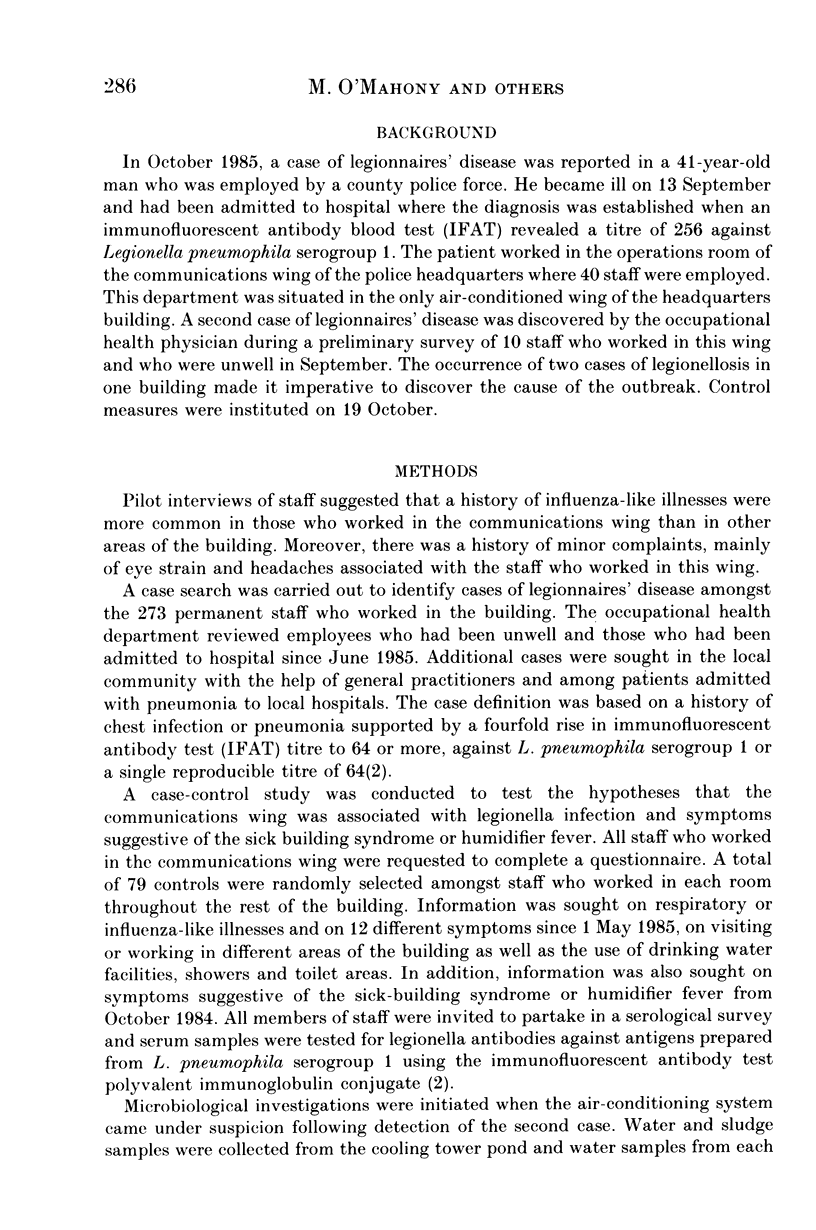

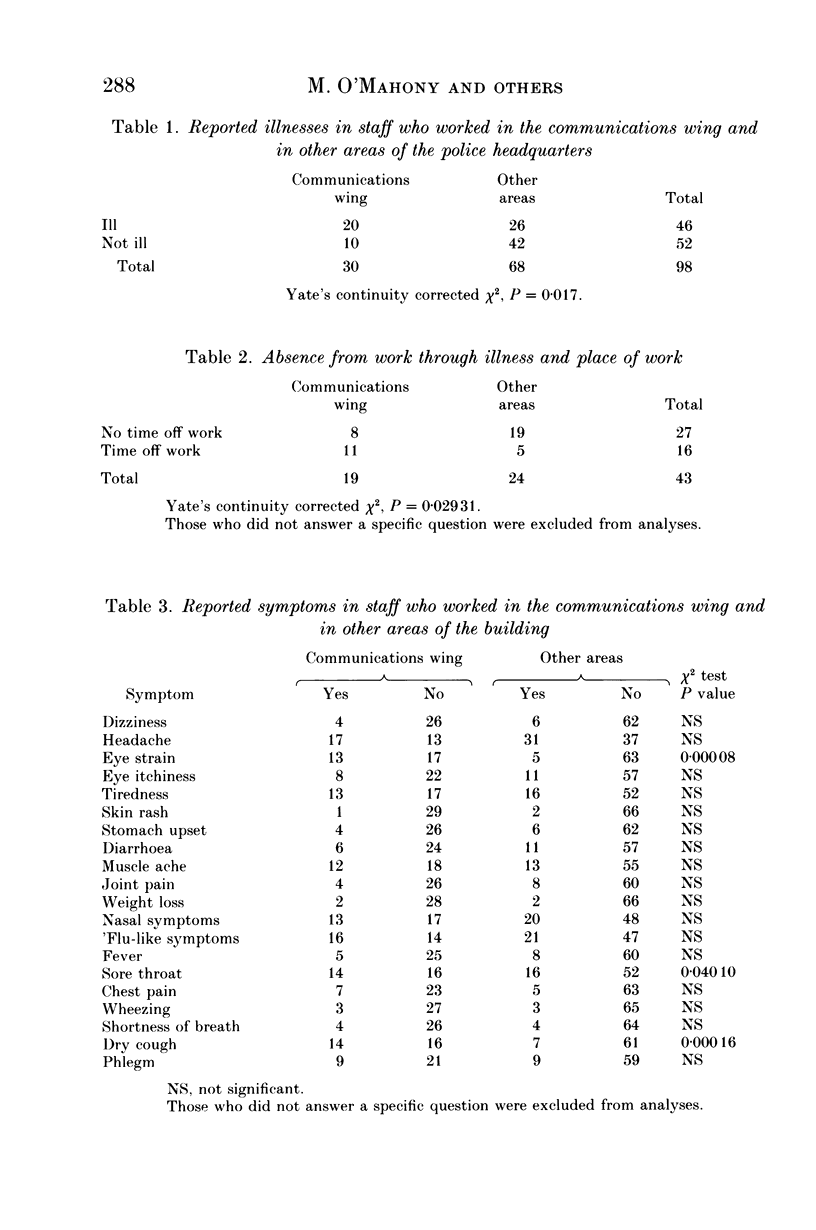
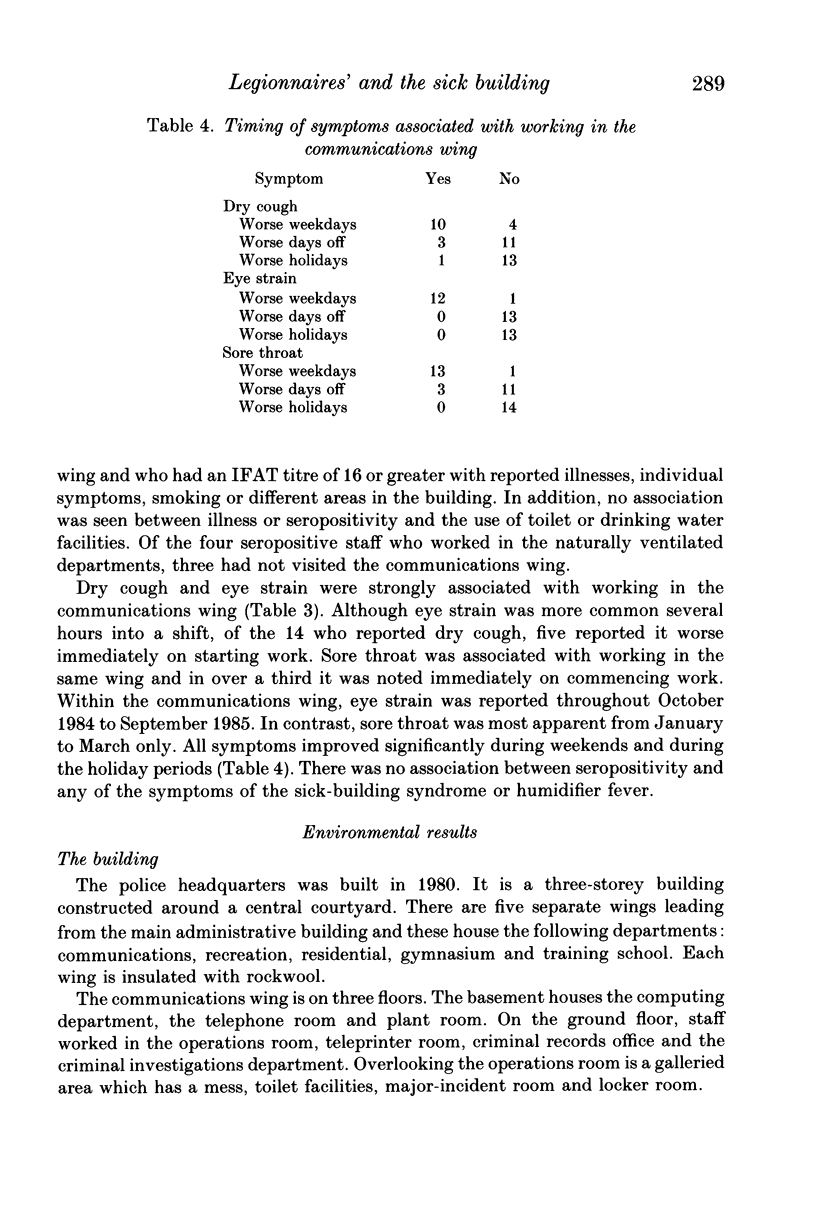
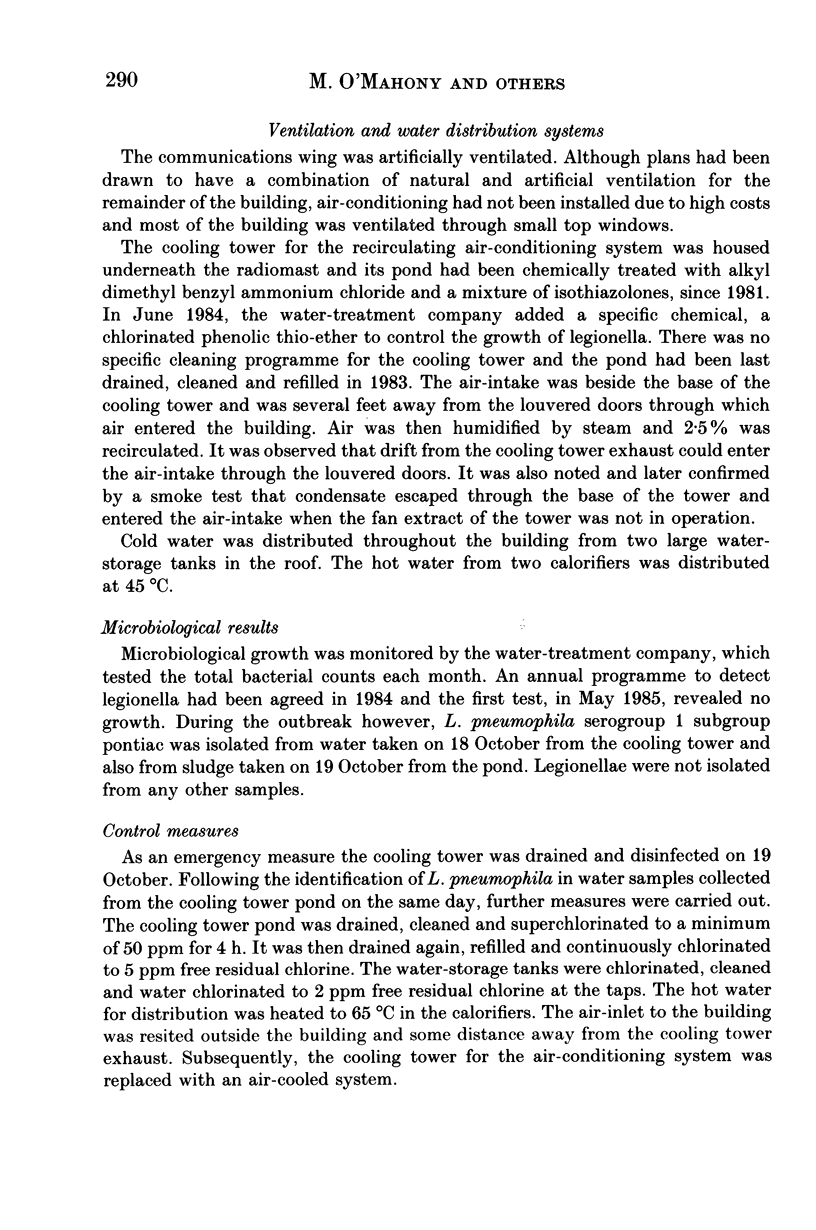
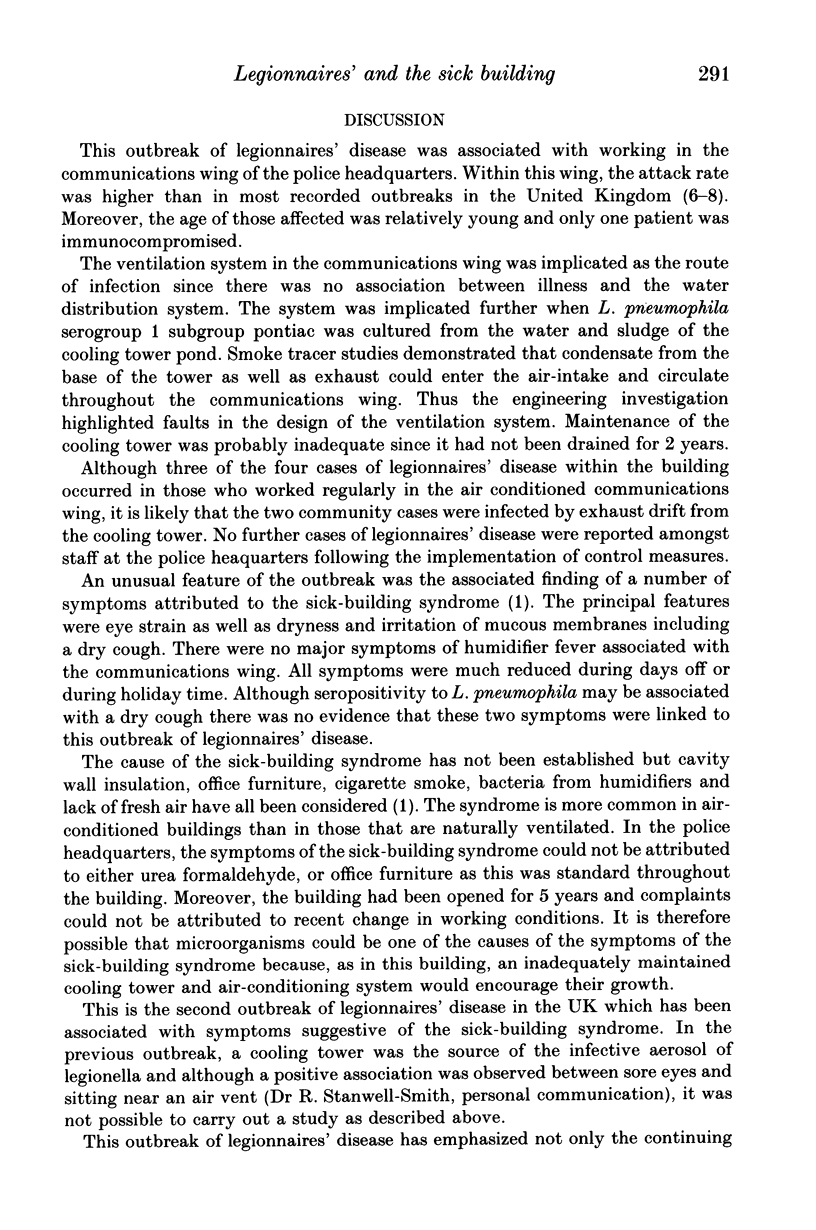
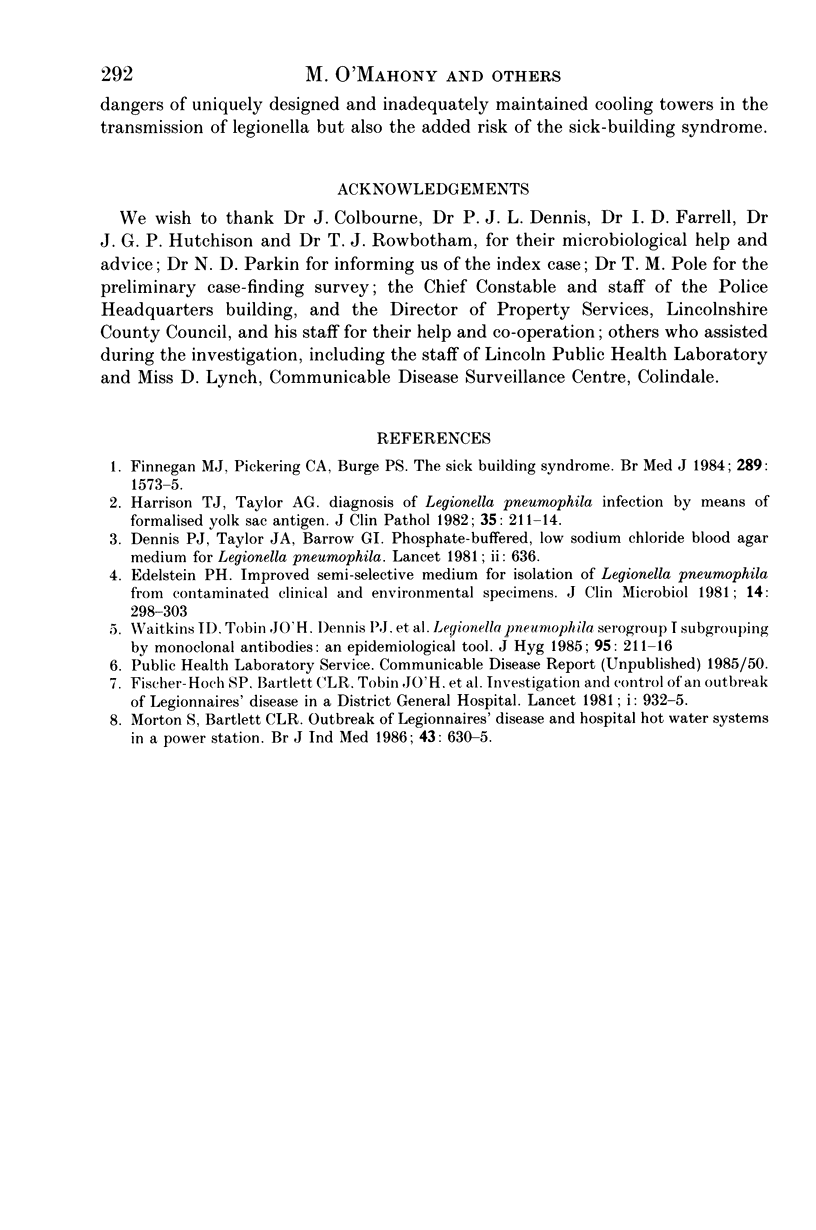
Selected References
These references are in PubMed. This may not be the complete list of references from this article.
- Dennis P. J., Taylor J. A., Barrow G. I. Phosphate buffered, low sodium chloride blood agar medium for Legionella pneumophila. Lancet. 1981 Sep 19;2(8247):636–636. doi: 10.1016/s0140-6736(81)92771-9. [DOI] [PubMed] [Google Scholar]
- Edelstein P. H. Improved semiselective medium for isolation of Legionella pneumophila from contaminated clinical and environmental specimens. J Clin Microbiol. 1981 Sep;14(3):298–303. doi: 10.1128/jcm.14.3.298-303.1981. [DOI] [PMC free article] [PubMed] [Google Scholar]
- Finnegan M. J., Pickering C. A., Burge P. S. The sick building syndrome: prevalence studies. Br Med J (Clin Res Ed) 1984 Dec 8;289(6458):1573–1575. doi: 10.1136/bmj.289.6458.1573. [DOI] [PMC free article] [PubMed] [Google Scholar]
- Fisher-Hoch S. P., Bartlett C. L., Tobin J. O., Gillett M. B., Nelson A. M., Pritchard J. E., Smith M. G., Swann R. A., Talbot J. M., Thomas J. A. Investigation and control of an outbreaks of legionnaires' disease in a district general hospital. Lancet. 1981 Apr 25;1(8226):932–936. doi: 10.1016/s0140-6736(81)91626-3. [DOI] [PubMed] [Google Scholar]
- Harrison T. G., Taylor A. G. Diagnosis of Legionella pneumophila infections by means of formolised yolk sac antigens. J Clin Pathol. 1982 Feb;35(2):211–214. doi: 10.1136/jcp.35.2.211. [DOI] [PMC free article] [PubMed] [Google Scholar]
- Morton S., Bartlett C. L., Bibby L. F., Hutchinson D. N., Dyer J. V., Dennis P. J. Outbreak of legionnaires' disease from a cooling water system in a power station. Br J Ind Med. 1986 Sep;43(9):630–635. doi: 10.1136/oem.43.9.630. [DOI] [PMC free article] [PubMed] [Google Scholar]
- Watkins I. D., Tobin J. O., Dennis P. J., Brown W., Newnham R., Kurtz J. B. Legionella pneumophila serogroup 1 subgrouping by monoclonal antibodies--an epidemiological tool. J Hyg (Lond) 1985 Oct;95(2):211–216. doi: 10.1017/s0022172400062641. [DOI] [PMC free article] [PubMed] [Google Scholar]


